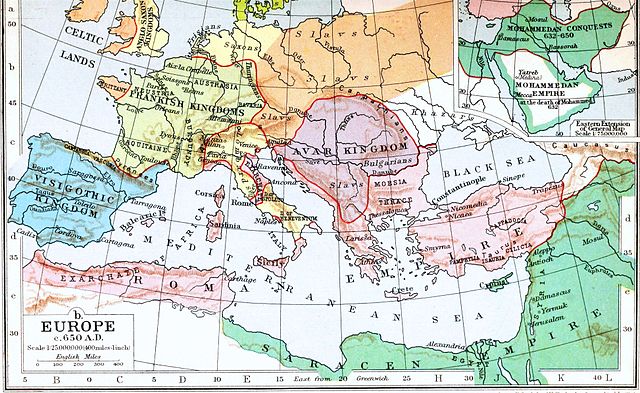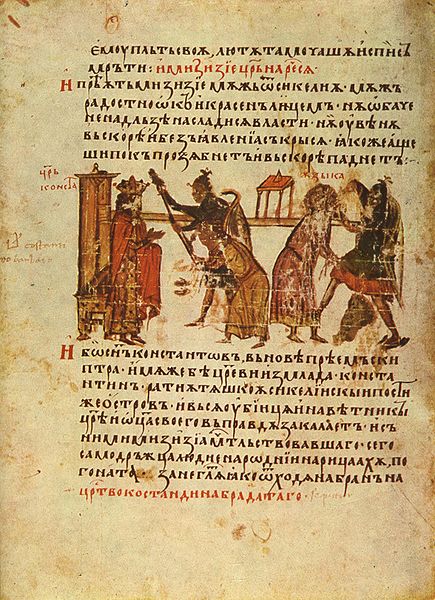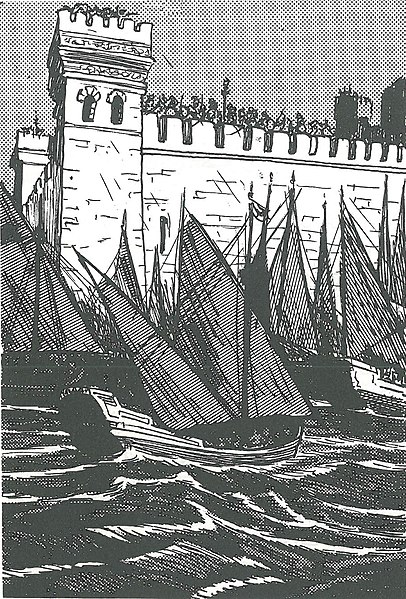Tiberius (son of Constans II)
Tiberius was Byzantine co-emperor from 659 to 681. He was the son of Constans II and Fausta, who was elevated in 659, before his father departed for Italy. After the death of Constans, Tiberius' brother Constantine IV, ascended the throne as senior emperor. Constantine attempted to have both Tiberius and Heraclius removed as co-emperors, which sparked a popular revolt, in 681. Constantine ended the revolt by promising to accede to the demands of the rebels, sending them home, but bringing their leaders into Constantinople. Once there, Constantine had them executed, then imprisoned Tiberius and Heraclius and had them mutilated, after which point they disappear from history.
Tiberius, mosaic in basilica of Sant'Apollinare in Classe, Ravenna.
Tiberius and Heraclius on the reverse of a solidus.
Constans II, nicknamed "the Bearded", was the Byzantine emperor from 641 to 668. Constans was the last attested emperor to serve as consul, in 642, although the office continued to exist until the reign of Leo VI the Wise. His religious policy saw him steering a middle line in disputes between the Orthodoxy and Monothelitism by refusing to persecute either and prohibited discussion of the natures of Jesus Christ under the Type of Constans in 648. His reign coincided with Muslim invasions under, Umar, Uthman, and Mu'awiya I in the late 640s to 660s. Constans was the first emperor to visit Rome since the fall of the Western Roman Empire in 476, and the last one to visit Rome while it was still held by the Empire.
A solidus of Constans II c. 651–654, wearing a diadem and holding the globus cruciger. The inscription reads dn constantinus pp av.
Byzantine Empire in 650 under Constans II
Torture of Maximus the Confessor under the orders of emperor Constans II, miniature from the 12th century Manasses Chronicle.
The Roman fleet engaging the Arabs at the Battle of the Masts off the Lycian coast.






